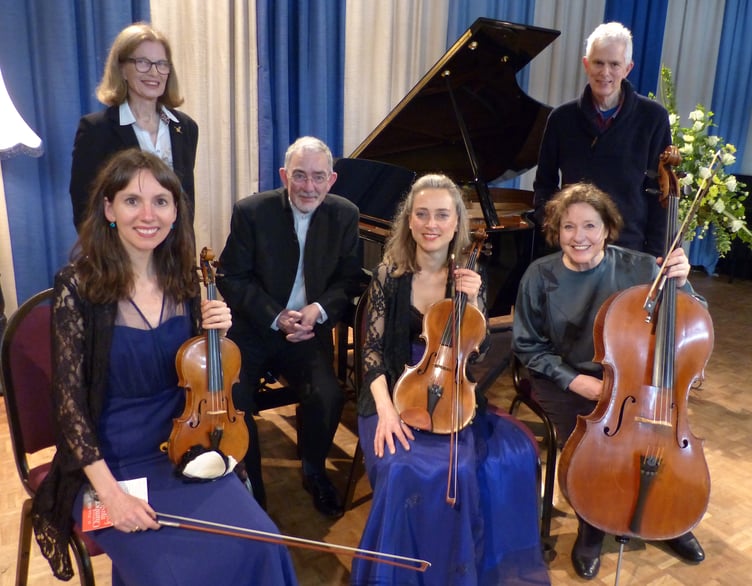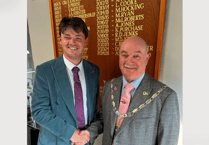THE Rossetti Ensemble gave the last of this season’s Nadsa concerts with a programme superbly performed. Rossetti cellist Tim Lowe was replaced for this performance by Ursula Smith.
Mozart’s Piano Quartet in G minor was introduced by pianist John Lenehan who told us that Mozart innovated by being the first person to write for this combination of instruments: he added a viola to the customary piano trio.
At that time, this G minor quartet was considered too complicated and didn’t sell well. The rendering we heard made it easy to accept that this is one of Mozart’s finest chamber works.
Its first ‘Allegro’ movement was played with an excellent balance of drama and delicacy, the nuanced phrasing present in minute Rococo curls and broad arching phrases.
John’s lead in the ‘Andante’ was just right for a walking pace, and subsequent melodic lines were pure cantabile.
The bright and light Rondo with a climactic finale was not only a glorious rendering of Mozart, but it also built my confidence for the programme to follow.
Sarah-Jane Bradley said she was pleased to be playing pieces by Mozart and Bridge, both viola players. A viola player herself, this was a chance to shine, and shine she did.
She commented that this Phantasy for Piano Quartet is a passionate early work of Bridge, and its tonality made it accessible.
Well, the first few bars certainly were passionate.
As it progressed, passion expressed itself in various ways, the intensity being held through serene legato lines, and a climax fading to a tranquil conclusion - a very different kind of magic.
Mahler was only 16 when he composed his Piano Quartet movement. Sara Trickey suggested it was perhaps something like a GCSE project, and full of teenage angst.
From a brooding piano entrance, the Rossetti Ensemble gradually built to a full-bodied dramatic sonority that one might expect from a Mahler orchestral work.
This contrasted with the return of the brooding angst, which grew, only to be cut through by the stunningly convincing mini-cadenza of Sarah Trickey. Mahler’s only surviving chamber work abated to a calm ending.
For Schumann’s Piano Quartet in E flat, Ursula Smith, not only reminded us of the remarkable intensity of the relationship between Clara [an extremely successful pianist who had 8 children in 13 years] and Robert Schumann, but also told us an endearing anecdote. Clara’s wedding gift to Robert was a musical composition: Robert’s to Clara, a cook-book. S
Schumann’s mood swings are in the manuscripts, but to translate them into a living performance, without loss of tonality or precision, is indeed a rare skill; in this, again, the Rossetti excelled.
And, if one has to single out a particular memorable moment, mine would be the warm tone of Ursula’s cello in the Andante cantabile; a haunting melody entwined with glorious support.
I look forward to NADSA’s new concert season in September, in the hope that such feelings of exhilaration and euphoria will be rekindled.
Jeff Collman





Comments
This article has no comments yet. Be the first to leave a comment.